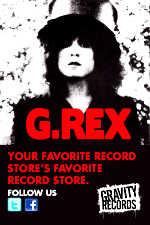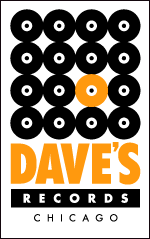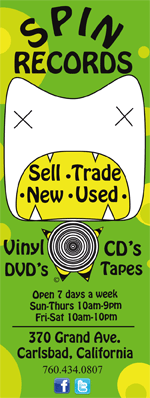
On September 10, Omnivore Recordings unveils a fascinating artifact detailing the strength of singer-songwriter Laura Nyro’s skills from the earliest vantage point yet: 1966, at 18 years of age. Go Find the Moon: The Audition Tape is raw documentation of Nyro playing songs for Milt Okun and her future manager Artie Mogull, the tape contrasting wonderfully with Trees of the Ages; Laura Nyro Live in Japan, which came out in July, offering robust performances from 1994 that reveal her artistry as undiminished. Trees of the Ages is available on CD and digital, while Go Find the Moon is out on CD, digital, and 45rpm vinyl (with a bundle option offering a limited-edition lithograph print of the cover).
Although still too few listeners are hip to it, the late singer-songwriter and pianist Laura Nyro was a tremendous talent, in some ways comparable to Carole King but notably preceding her as a recording artist; her first LP, More Than a New Discovery, was issued by Verve Forecast in 1967 (reissued in stereo with a different track order as The First Songs by Columbia in ’69). But unlike King, who was responsible for one of the smash albums of the 1970s, Nyro’s sales were considerably more modest (if never a commercial disaster).
Some have categorized Nyro as a cult musician, but that kinda insinuates that she had an artistic trait (or a few) that limited her appeal. To my ear, her stuff is so straightforwardly (but intelligently) pop that when playing her great records there is regularly a sense of the bygone listening public being stricken with collective knuckleheadedness in regard to picking up what Nyro was laying down.
In his liner essay for Go Find the Moon, Jim Farber observes that Nyro was an artist who required the listener to accept her music on her terms (finding and going to her rather than the other way around). To elaborate, Nyro, who is a resolutely accessible singer-songwriter, simply refused to engage in the subtle maneuvers that would’ve made her music truly mainstream, for good or ill. This is a big part of what differentiates her own versions of songs from those by others that became hits.
The take of “And When I Die” that opens Go Find the Moon is an excellent illustration of Nyro’s simultaneous boldness and restraint. Even in this audition, featuring just voice and piano (the version with accompaniment is on her debut), she’s thoroughly embraced a grand, Broadway musical-like sweep while avoiding the overwrought touches and pure lapses of taste that would’ve curdled the song into corn (a la a certain hit cover from not long thereafter).
But to be frank, those who know Nyro only by reputation, or possess even less familiarity with her life and work, probably shouldn’t use Go Find the Moon as an introduction. While it does offer three songs she never recorded in studio, the best being the title track, and is a clean recording if not exactly hi-fidelity, its reality as an audition is tape is often front and center.
This includes a false start of “Lazy Susan,” which also made the cut for her debut; a complete take finishes the album in strong fashion. There is also conversation with either Okun or Mogull, in which Nyro is specifically asked if she ever performs songs by other writers. This was a rather jarring turn of events, as I listened prior to reading Farber’s reference to it in his piece.
What registered as unfeelingly rude was directly tied to the rarity of singers in this era (especially non-folkies) performing their own songs. It was an impulse Okun and Mogull wouldn’t have been all that conversant with. Strikingly, Nyro, a non-professional at 18, is momentarily blindsided by the request, as if singing someone else’s songs had never occurred to her before.
Anybody with a deep love of Nyro’s work knows Gonna Need a Miracle, her stone killer soul/ doo-wop covers album with Labelle from 1971, so it’s clear as crystal that she cozied up right quick to covering the material of others. Contrasting here, her instantaneous attempts at the jazz standard “When Sunny Gets Blue,” Leiber & Stoller’s “Kansas City,” and “I Only Want to Be With You” (as popularized by Dusty Springfield) unwind a little like a rough early run-through of a prospective medley.
This is where things get intriguing, as Nyro is at once tentative and, as Farber points out, unable to not give these impulsive song fragments her unique stamp, even at such a young age. And so, Farber’s statement that Go Find the Moon presents a fully formed Nyro isn’t hyperbole, though considerable refinements did come later, which is partly why it’s not the best point of entry for newbies. Another reason is that Go Find the Moon is simply a rough canvas, one that’s wonderful to experience, but which requires cognizance of the artist to fully appreciate.

So where to begin? The most sensible place is More Than a New Discovery, but right now a strong case can be made for Trees of the Ages, foremost because these live performances, one long set from Kintetsu Hall in Osaka and three songs from two separate nights at On Air West in Tokyo, deliver a vibrant interweaving of Nyro’s career trajectory.
For starters, it features a backing vocal group (not Labelle, but Diane Wilson, Dian Sorrell, Diane Garisto) opening the Osaka show with “Dedicated to the One I Love,” a song originally by The “5” Royales but surely a hit-tip on Nyro’s part to The Shirelles, whose “I Met Him On Sunday” opened Gonna Take a Miracle. They follow it with “Ohh Baby Baby” by Smokey and the Miracles, who are also heard on Miracle with “You Really Got a Hold On Me.”
These songs could be construed as crowd-pleasing moves, and sure, but no one seems to be getting more enjoyment from the endeavor than Nyro herself. Gonna Take a Miracle is represented on Trees of the Ages only by a nice version (not as strong as the one on Miracle) of “Wind,” a ’50s Detroit doo-wop gem by Nolan Strong & the Diablos. The only other non-originals are solid readings of “Let It Be Me,” referencing Jerry Butler and Betty Everett’s version from 1964, and Bacharach’s “Walk On By.”
But to her credit, she’s in no way doing a nostalgia tour of her early material. Of the CD’s 21 tracks, only three derive from the records that put her on the map (if not the charts): “And When I Die,” “Wedding Bell Blues,” also from her Verve debut, and “Emmie,” from Eli and the Thirteenth Confession, her second album from ’68. “My Innocence” is from the ’78 album Nested, and there’s a smattering of stuff from her ’84 LP Mother’s Spiritual.
The rest of Trees of the Ages, nearly half the CD, is drawn from the ’94 release Walk the Dog and Light the Light, which means the caveat here is that folks who aren’t fond of that record are likely to be underwhelmed by this live set. But as a fan with minimal familiarity with her post-Nested output, I felt the disc flowed fantastically, and represented the mature, socially committed Laura Nyro quite well. It made me miss her a whole lot.
Go Find the Moon: The Audition Tape
A-
Trees of the Ages; Laura Nyro Live in Japan
A-












































